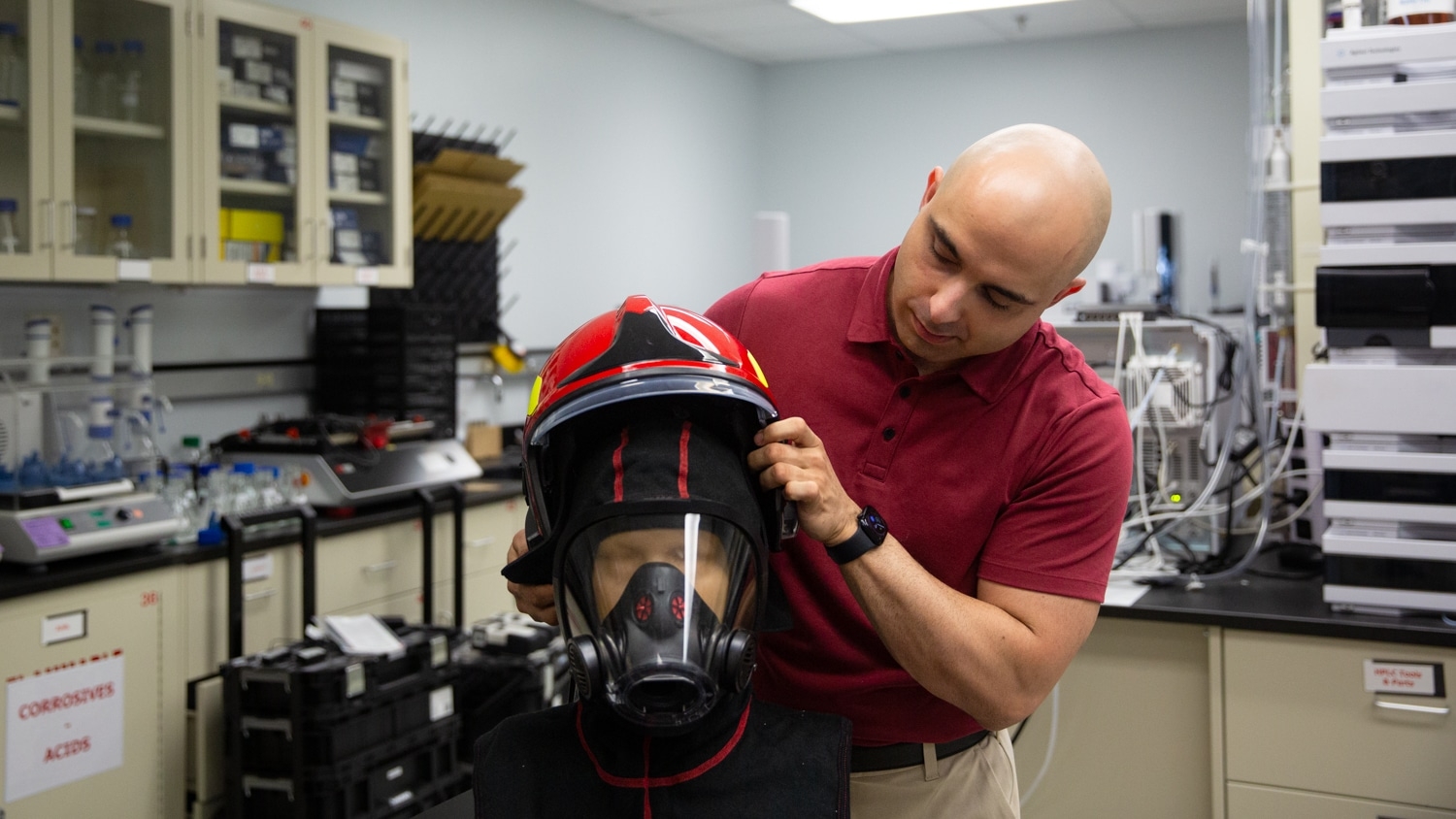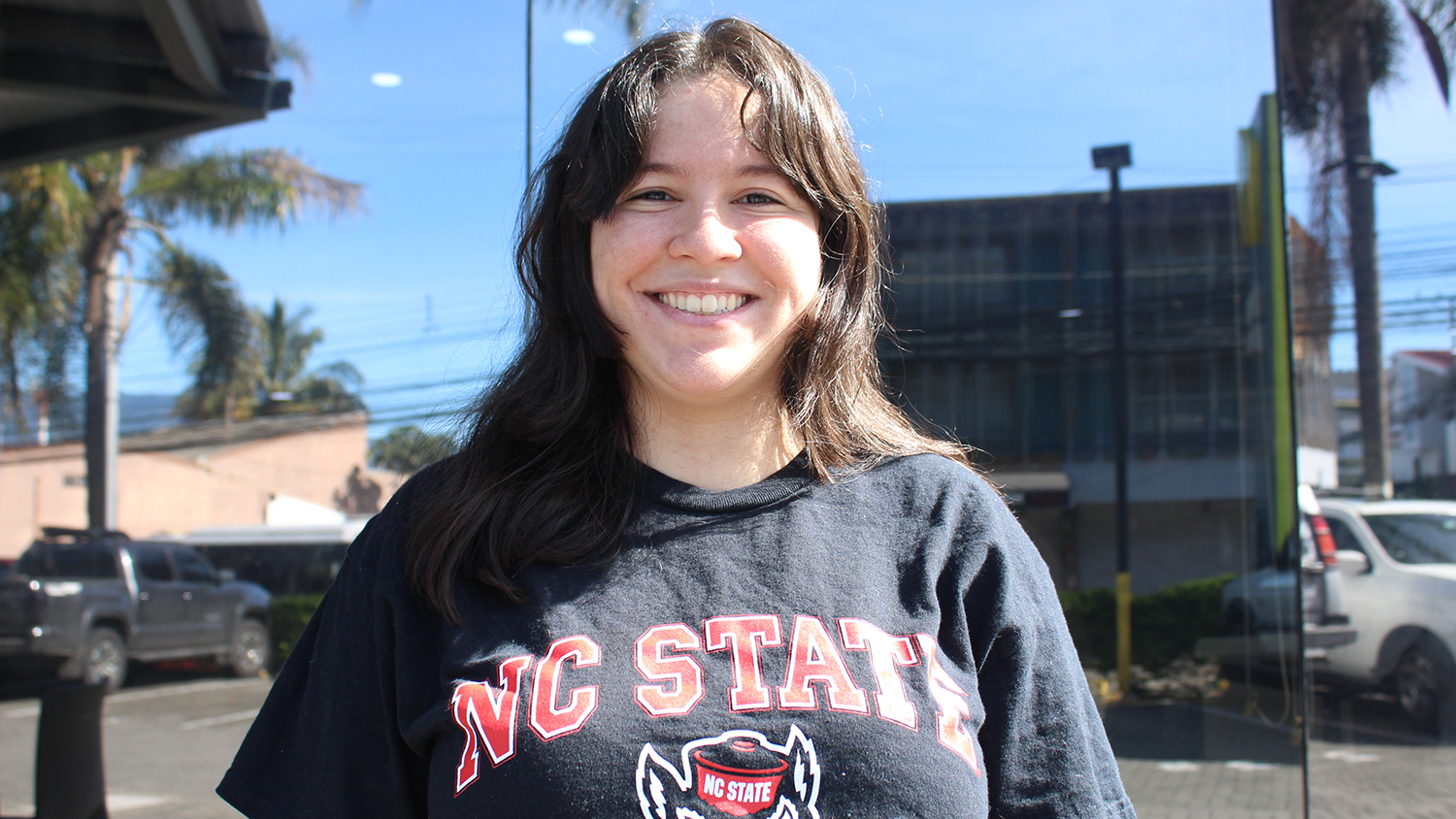Volunteer Firefighter Arash Kasebi Brings On-the-Field Insight to Postdoctoral Research

By Elyse Boldizar
Sometimes all it takes is one random decision for a college career to completely change direction. That’s how it was for Arash Kasebi, an alum and postdoctoral research fellow at the Wilson College of Textiles.
The Raleigh native started at NC State University as a paper science major, but soon realized that the career was not for him. On a whim, he became a volunteer firefighter the summer after his first year — a decision that set the stage for his entire academic career.
“I remember the first training exercise we did with live fire in the building,” Kasebi says. “I was just amazed that I could walk into a building on fire and come out unscathed wearing this firefighter gear that was made out of textiles. From that I decided that I wanted to learn more about textiles on a deeper level.”
Kasebi switched to textile technology with a concentration in medical textiles to learn more about the science behind the gear. He went on to earn an M.S. in textile engineering in 2019 and a Ph.D. in fiber and polymer science in 2022. Since then, he has continued his research as a postdoctoral research fellow at the Textile Protection and Comfort Center.
A partnership is formed
Kasebi first got involved in the American Association of Textile Chemists and Colorists during his undergraduate years. The organization is a textiles hub that develops industry standards, testing materials and educational resources for the global textile industry. It was there that Kasebi met his future advisor, Assistant Professor Bryan Ormond.
“I found out that he was a firefighter early on,” Ormond says. “You don’t normally have a ton of grad students that are also firefighters or things like that. He can walk into a room of firefighters and have more credibility than I ever can just because he walks in their shoes. And I realized early on that he was excited about research.”
At the time of Kasebi’s graduation, Ormond was beginning a project through the Federal Emergency Management Agency researching firefighter hoods which are the gear firefighters wear to protect any parts of the head or neck that are not already covered by the jacket, mask or helmet. Recognizing Kasebi’s interest in the subject, Ormond asked Kasebi to get involved.
Nearly seven years later, the two are still working together. It is a partnership that goes beyond a typical student-advisor relation.
“There’s a difference between a boss that gives instructions and tells you what to do and a leader like Dr. Ormond who guides you through the process and understands that you have a unique set of skills and motivation,” Kasebi says. “Dr. Ormond immediately recognized my passion and because of that, we have a very strong relationship. We work very synergistically. He has experience in academia and knows how the Wilson College of Textiles works inside out and then there’s me from the field being able to fill in the gaps as far as how firefighters tick.”
Connecting the field to the lab
Kasebi tests gear by exposing the materials to the same threats that firefighters come in contact with on the job, such as ultraviolet radiation and heat. He also examines the less obvious effects of washing and caring for the garments, which have surprisingly large impacts on the durability.
The primary goal, Kasebi says, is to protect firefighters from carcinogens borne from house fires. As a volunteer firefighter himself, Kasebi brings an invaluable perspective to the lab.
“I found myself in a very unique position where I serve as a bridge between the lab and the field,” Kasebi says. “What I do in the field fuels my insight on how I can make experiments in the lab more realistic and relevant to firefighters. In turn, I can communicate our lab findings effectively to the fire service industry.”
Ormond agrees that Kasebi’s position as both a firefighter and researcher has had a pivotal impact.
“When you’re dealing with personal protective equipment, it’s all about the end user’s needs, not what we as researchers think they need,” Ormond says. “ It’s really easy for academics and people in the industry to focus solely on the technical side of products, but a technical success doesn’t mean firefighters are going to wear it or use it. Arash has helped keep that voice of the end user at the forefront.”
Looking to the future
While Kasebi is open to future opportunities in the industry, his passion for academia is undeniable.
“One thing that I realized when entering academia as a grad student was that there’s a lot of work to be done and a lot of questions to answer and for a good cause.”
It is evident that Kasebi is not alone in this thinking.
“I’ve worked with lots of different students and peers that are from wildly different backgrounds than I am but are just as passionate about the research,” Kasebi says. “Many don’t know anything about firefighting, but they quickly realize that this is a very fun industry and an industry that needs help from the scientific community. I’m very happy to see students that have never even worn the gear take so much pride in their job and work with these firefighters that are as much heroes to us as we are heroes to them.”
This post was originally published in Wilson College of Textiles News.
- Categories:


